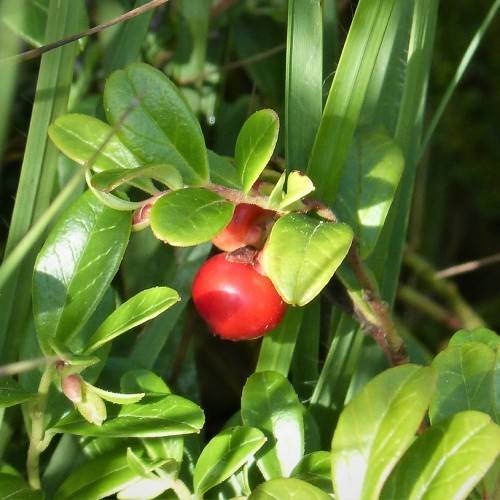
lingonberry
Vaccinium vitis-idaea
Also Known As - small cranberryCycle:
Perennial
Watering:
Average
Hardiness Zone:
3 - 7
Flowers:
Flowers In Summer
Sun:
Full sun
Soil:
Sandy Loamy Humus Rocky
Fruits:
Fruits In Summer Ready In
Edible:
Yes
Leaf:
Yes
Growth Rate:
High
Maintenance:
Moderate
Drought Tolerant:
Yes
Salt Tolerant:
Yes
Care Level:
Medium
watering
Water your lingonberry plant to keep the soil moist but not wet. If the mulch layer is an inch or 2 thick, water once a week, ensuring the plant is receiving about an inch of water each time. If the mulch layer is thinner, water the lingonberry plant 2-3 times a week as needed to keep the soil around the roots moist. Lingonberry plants are drought tolerant and do not need to be over-watered, so it's important to check the soil before watering.
sunlight
Lingonberries (Vaccinium vitis-idaea) thrive best in direct sunlight for 6 to 8 hours per day. Lingonberries do best with at least some early-morning sunlight and the garden should be situated such that the bushes receive full sun for most of the day. Lingonberries also tolerate light shade, but they will have fewer berries if they don’t get adequate sun exposure. Too little sun can also stunt the growth of the plants. If grown outside in full sun, lingonberries will bloom and bear fruit for 2 to 3 years before needing to be moved or replaced.
pruning
Lingonberries benefit from occasional pruning in the early spring before flowers and new foliage appear. Prune the plant back to the ground before new growth emerges. This stimulates more laterals and encourages larger fruits and greater yields. Removing dead and diseased canes should also be done, as well as removing any suckers that may appear. Pruning should typically not be done after late May as, flowers will already have emerged by this time.
